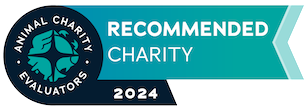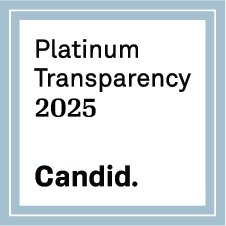Mandatory Welfare Courses Reveal Fish Care Gaps
Español | 中文 | हिंदी | Bahasa Indonesia
Since fishes are not yet universally regarded as sentient, their welfare often gets overlooked by the industry and consumers. This is a significant concern for animal advocates, as aquaculture is the world’s fastest-growing form of animal farming. In addition, evidence suggests that it’s fraught with animal welfare concerns.
Norway, a global leader in fish farming with more than 370 million salmon individuals farmed in 2019 alone, has laws in place to equally protect fishes and other farmed animals. In an attempt to safeguard fishes in particular, the legislature requires mandatory welfare courses for fish farmers. In fact, Norway may be the only place where such courses are mandated by the government.
A team of Norwegian researchers attended several fish welfare courses to learn about the common-sense understanding of fish welfare in the fish farming sector. Through observation, interviews, and conversations with the workers, the team identified “on the ground” challenges and suggested how fish farm workers’ experiences could be used to improve farmed fish welfare.
In general, the courses were observed to comprise of two models revolving around the fishes, their welfare, the aquaculture industry, and welfare regulations:
- Describing “how things are” (e.g., current legislation, how fishes are treated on Norwegian farms)
- Describing “how things ought to be” (e.g., how better welfare can be ensured)
While the first model was the core part of the course curriculum, the second revolved around participants sharing experiences of best practices, both formally and informally.
Cross-cultural comparisons offered during the courses tended to portray Norway as the leader in animal welfare, with other countries lagging behind. However, while welfare concerns range from management practices to stress and disease, parasitic infections have recently gotten much attention in the Norwegian aquaculture sector. High stocking densities promote sea lice outbreaks and several treatments, including chemical, mechanical and thermal removal, are being tested.
The introduction of “cleaner fishes” — typically wrasse — is seen as a safe and environmentally-friendly alternative to other lice prevention methods. As a response to the increasing demand, strict biosecurity rules, and to counter overfishing of wild cleaner fishes, people are trying to farm cleaner fishes in Norway. However, the researchers found that many farm workers find the cleaner fish approach to add new welfare issues to fish farming. This corresponds well with recent scientific findings, too, as studies show that cleaner fishes have high mortality and total loss rates (undocumented mortalities and escapees).
Another frequently voiced concern was that government and industry regulations require fish farmers to perform ever-increasing daily tasks while still ensuring high welfare. This is often difficult as it can be tricky to balance the economic and welfare pressures coming at them from different stakeholders. The researchers argue that such a value dualism might indicate the impossibility of creating an intense capitalism-compliant aquaculture industry that’s free from animal suffering.
Course instructors emphasized that fish farm workers are responsible for communicating fish welfare issues “upward” to company leaders and authorities. The researchers noticed tension at times, when participants wanted to discuss specifics of their workplace, but might have felt apprehensive to do so in front of colleagues and superiors. The team found that informal conversations in small groups led to more active, candid discussions about welfare issues. Despite evaluating the welfare of the fishes they care for as generally good, such small group discussions did highlight welfare issues related to sea lice treatments, cleaner fishes, overcrowding, long-term stress, and farm intensification. While the courses did not directly address underlying reasons for farm workers’ concerns, they added legitimacy and opportunities for discussions among the attendees.
Studies indicate that good care involves “tinkering,” or responding to fish welfare concerns efficiently to reduce unnecessary suffering. However, fish farmers expressed that they are pulled in many different directions, and required to obey regulations from many different ministries. This administrative hurdle limits the time and energy they can use to provide adequate care for the fishes. The effect of this can be twofold: distress and frustration for the worker and lost potential for fish welfare progress for the aquaculture industry.
The researchers highlight that fish farm workers should be recognized not just as important personnel for enacting welfare legislation, but also as sources of information about improving welfare protocols. Because these workers spend every day with fishes and have an insider’s perspective on their suffering, their opinions should be actively sought out on welfare issues.
The study showcases what important roles mandatory fish welfare courses can play in assessing and improving the lives of fishes on farms. The findings suggest there is a gap between the idealistic fish welfare regulations in Norway and the realities of everyday practices in the aquaculture sector. Most notably, the many conflicting economic and legislative demands placed on fish farmers means that they may struggle to maintain high standards of fish welfare. As animal advocates, it’s important to empower farmers to speak up and share their experiences. If we place more emphasis on exploring holistic solutions that include all stakeholders, we can make welfare more understandable and attainable.

















